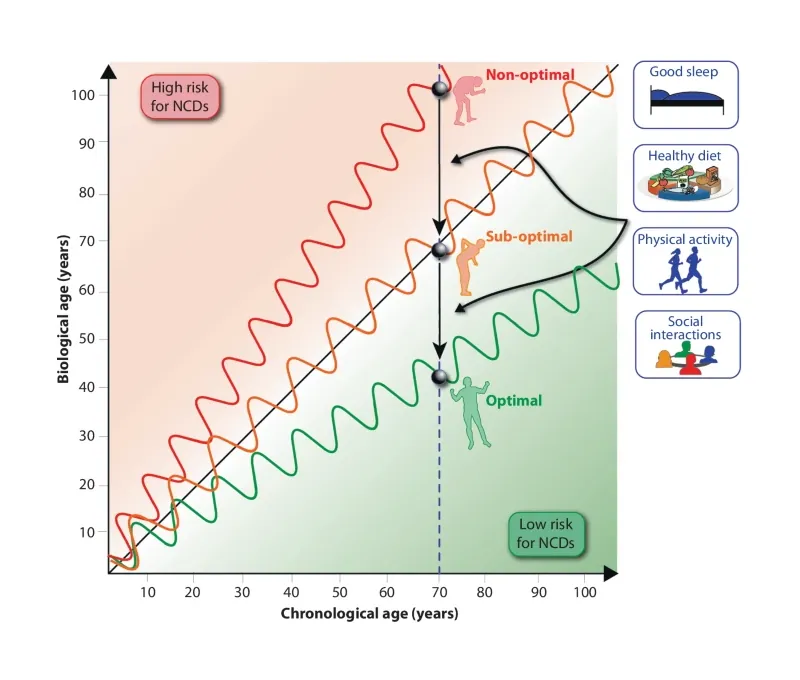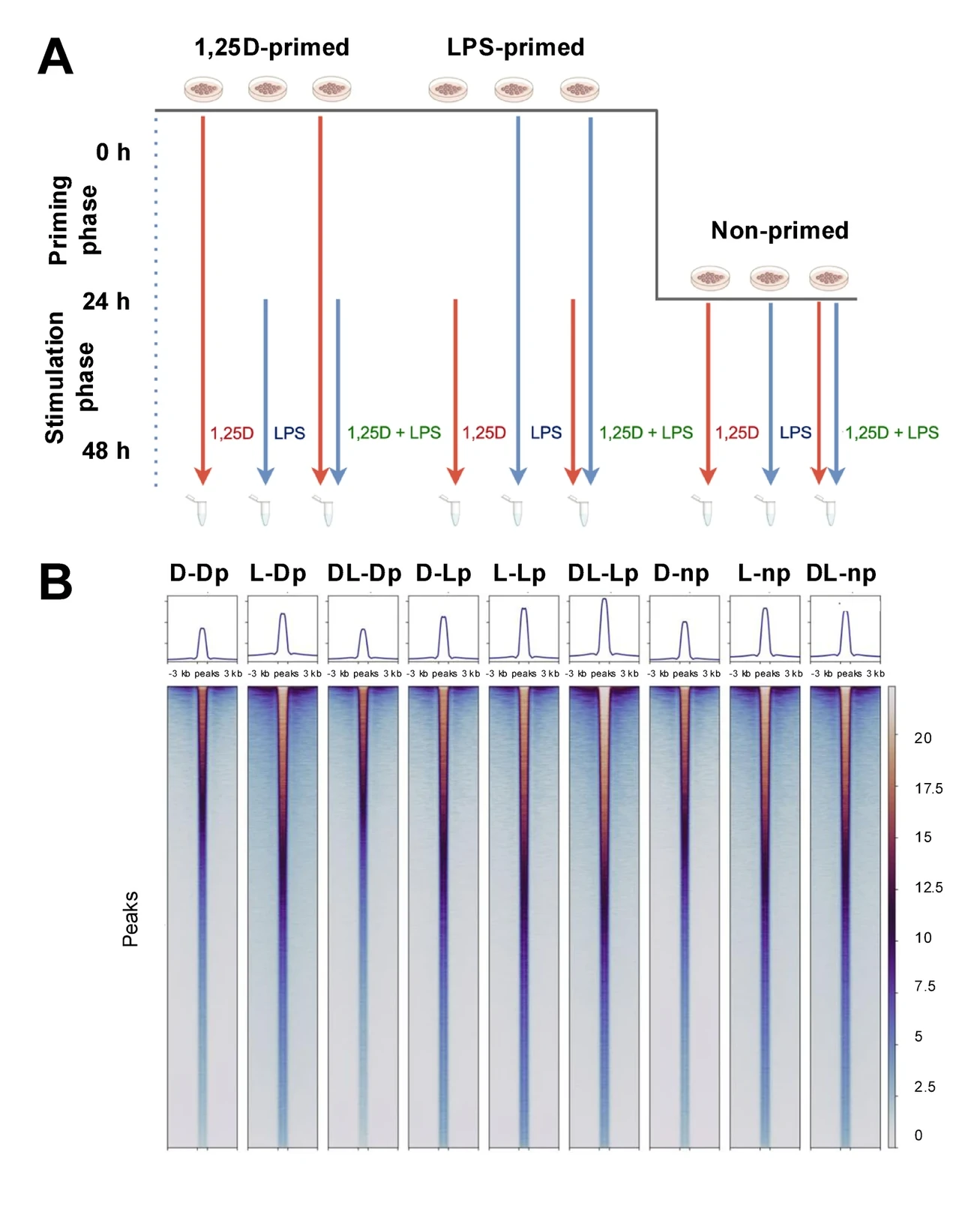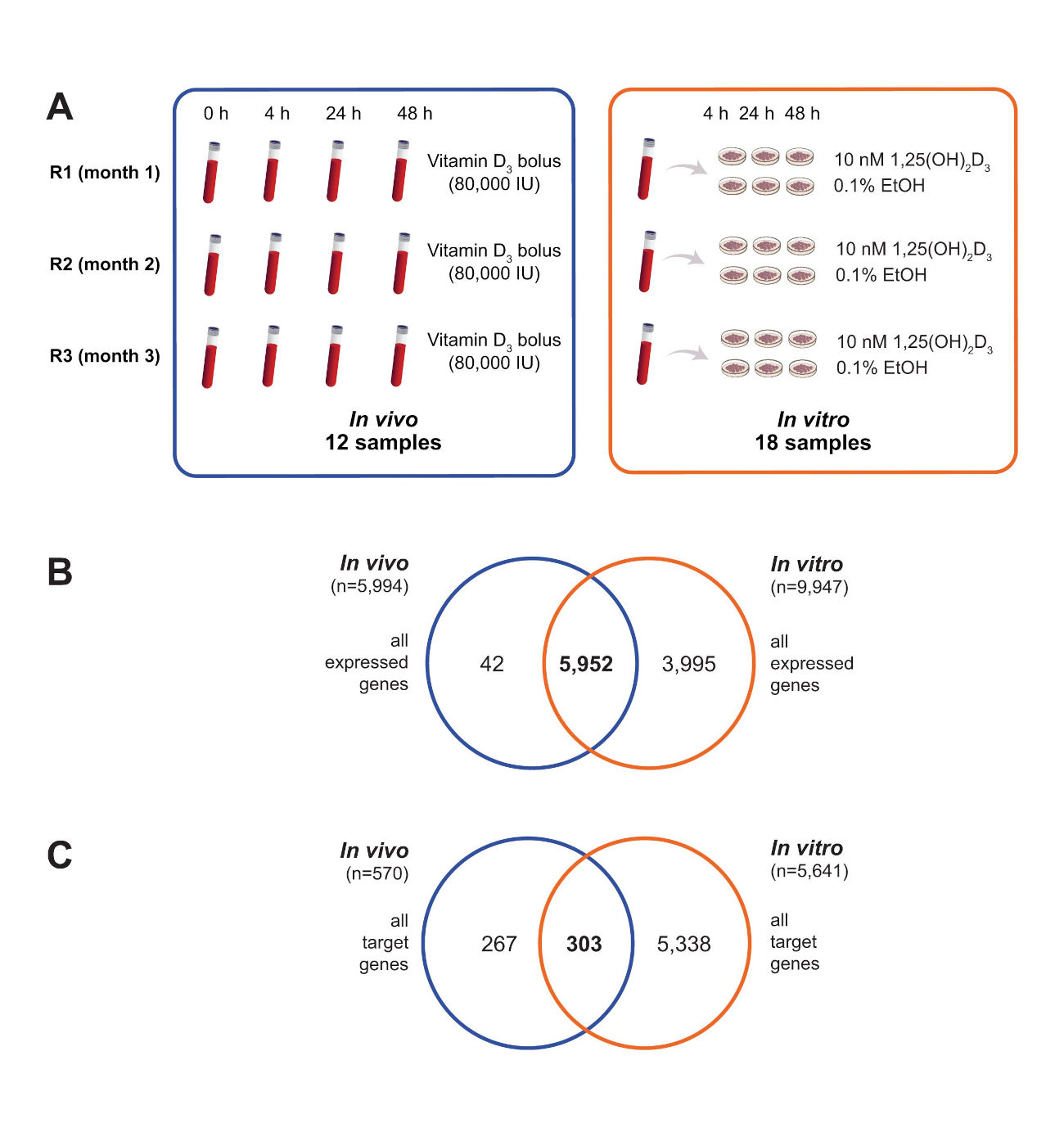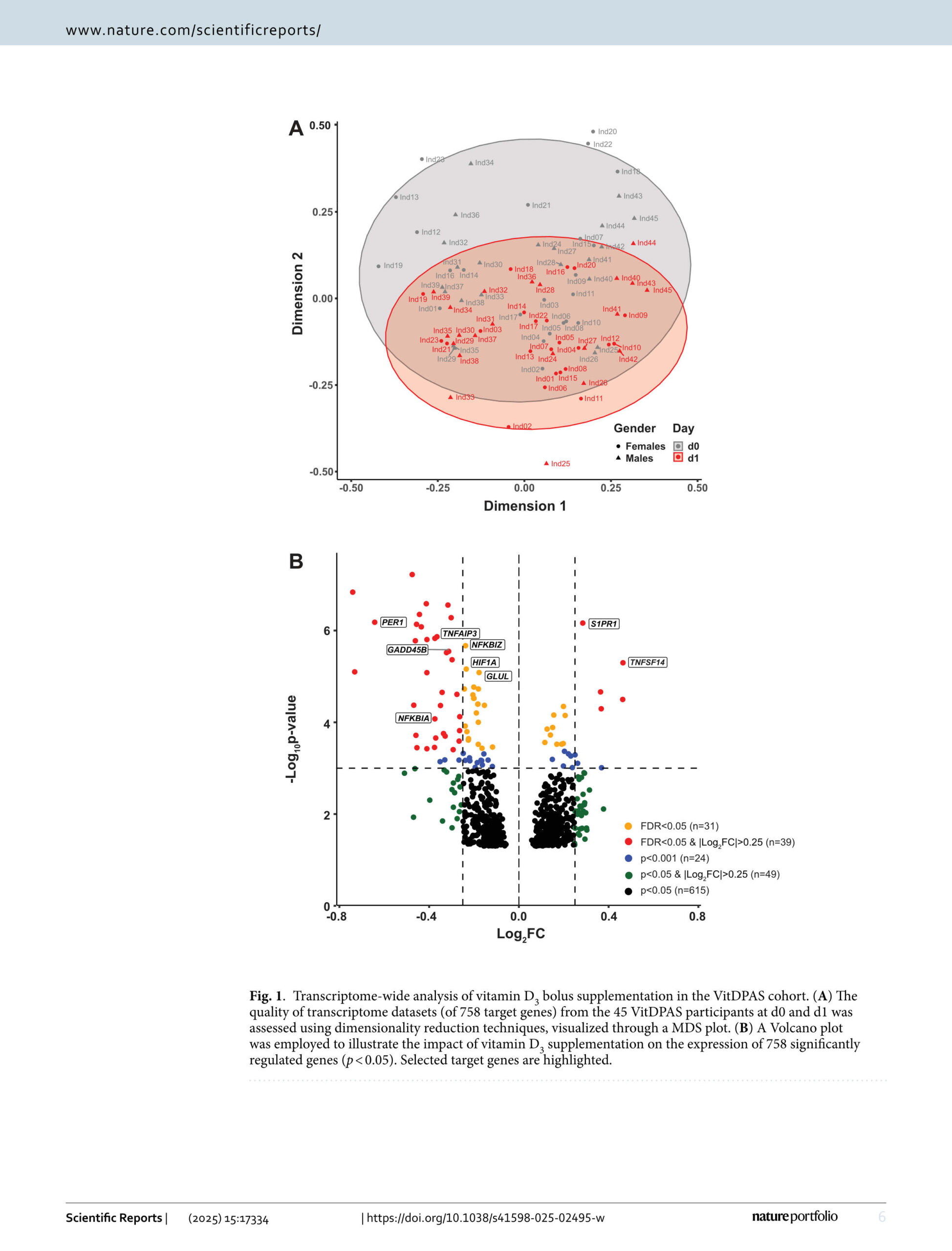Mariusz Jankowski, Emmi Hämäläinen, Mari Taipale, Sami Heikkinen & Carsten Carlberg
Vitamin D and lipopolysaccharide jointly induce a distinct epigenetic and transcriptional program in human monocytes
Scientific Reports volume 15, Article number: 27480 (2025)
Pathogen-associated molecular patterns such as lipopolysaccharide (LPS) mimic immune responses triggered by bacterial infections. The hormonally active form of vitamin D3, 1α,25-dihydroxyvitamin D3 [1,25(OH)2D3], supports innate immunity, but its molecular mechanisms remain incompletely understood. We investigated epigenomic and transcriptomic changes in THP-1 monocytes that were either unprimed or primed for 24 h with 1,25(OH)2D3 or LPS, followed by a second 24-hour stimulation with 1,25(OH)2D3, LPS, or their combination. Epigenome profiling via ATAC-seq revealed that co-stimulation with 1,25(OH)2D3 and LPS induces substantially more chromatin accessibility changes than either treatment alone, with up to 81% of altered regions uniquely responsive to the combination. Motif enrichment analysis highlighted JUN/FOS transcription factors as key regulators of this synergistic response. Transcriptomic analysis via RNA-seq mirrored these findings, though fewer genes than chromatin regions were affected. Notably, under 1,25(OH)2D3-primed conditions, 331 genes exhibited synergistic expression changes upon co-treatment, meaning that their responses significantly deviates from the additive effects of the individual stimulations. This includes 264 genes previously unrecognized as vitamin D targets. Functional annotation revealed that these genes are primarily linked to monocyte and T cell differentiation, in contrast to classical vitamin D targets associated with inflammation. In conclusion, our findings provide mechanistic insight into how vitamin D modulates inflammation through epigenetic and transcriptional reprogramming.
View full text







